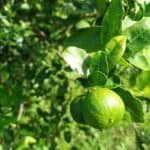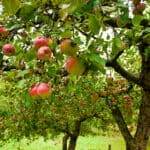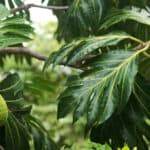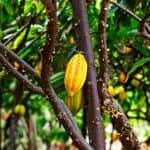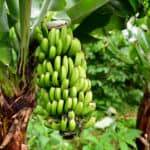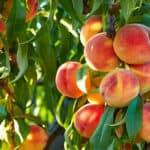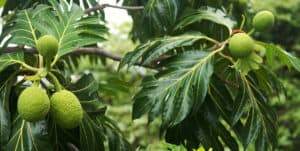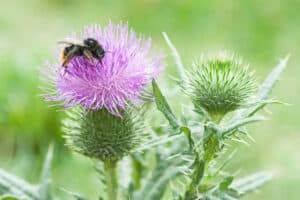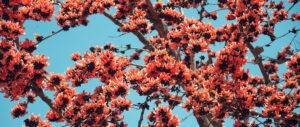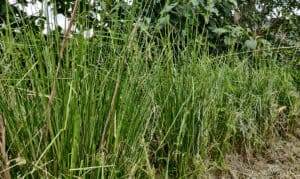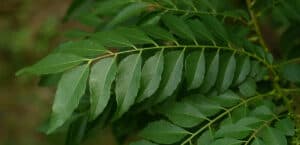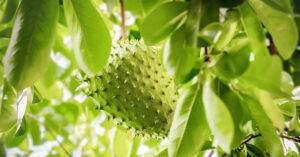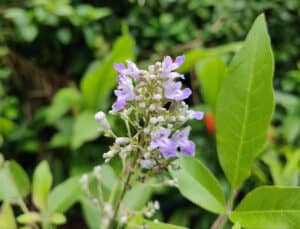Indian Jujube, Regenerating the Marginal Lands

Ziziphus mauritiana, also known as the Indian Jujube or Ber is a perennial shrub belonging to the Rhamnaceae family of flowering shrubs and trees, commonly known as the buckthorn family. It is a thorny shrub which can grow up to 15 m in height with a 25 to 30 cm thick trunk diameter.
It grows in tropical zones however is closely related to the Chinese jujube growing in temperate zones. It is native to the western deserts of Pakistan, India and the Gulf and is believed to have originated from the Indo-Malaysian region of Southeast Asia, now being cultivated in different tropical zones throughout the world.
Depending on the climate it ranges from growing as evergreen to deciduous.
In India, it is called Ber in Hindi, Bor in Marathi, Regu Chettu in Telugu, Bore Mara in Kannada.
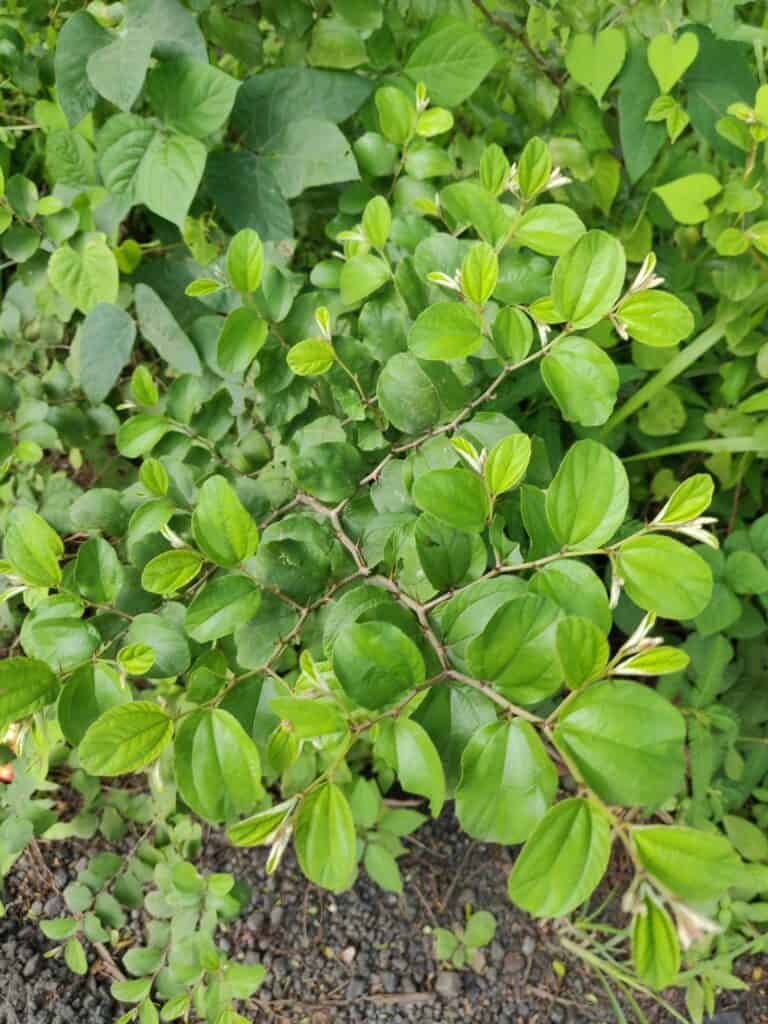
The leaves are ovate with an alternative adjustment, glossy and dark green on the upper side with greyish green on the lower side.
The flowers are arranged, seven to eight in each cluster, they have five petals and range in different shades of yellow to white.

The fruits are ovoid and fleshy, sometimes oblong. The size ranges from 1 to 4cm. They are light green when raw and turn dark reddish brown when ripe.
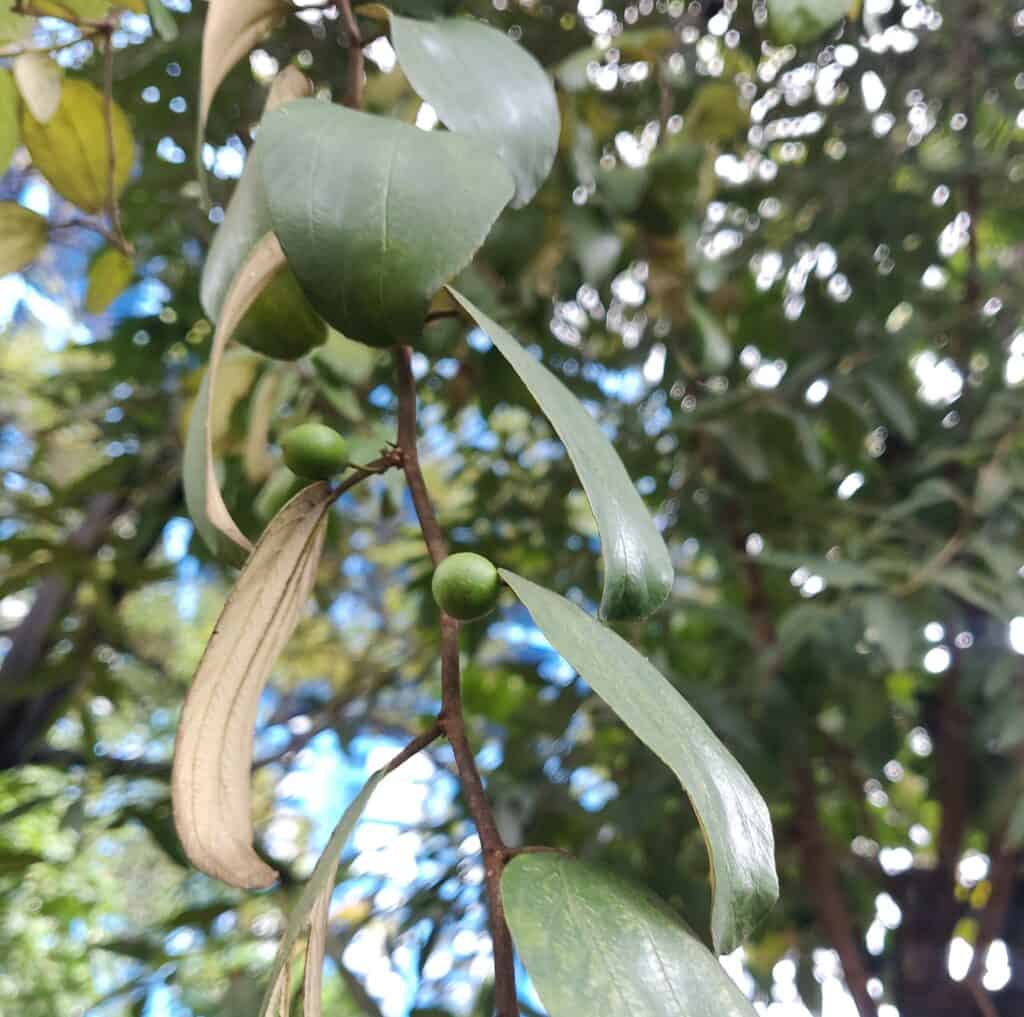
It is an integral part of the spring delicacies in India, the fruit becomes available from mid-October to April end in different climate zones of India.
As the plant is highly cultivated across community spaces, it’s one of the much-awaited and foraged snacks for children during spring. Both adults and children can be seen randomly taking breaks near a fruiting tree, collecting the fallen fruits, and eating and randomly dispersing the seeds along the roadsides which leads to the propagation of plants in localities. In monsoon, the plants can be seen germinating along roadsides in abundance.
Jujube’s cultural significance and popularity come from the mythological story of Ramayana, one of India’s greatest epic. An episode between Lord Rama and Shabari, a tribal devotee. It is said that Shabari collected and offered Jujube to Rama, she tasted all of the jujube’s before his arrival and served them half eaten. Rama accepted the berries and praised her for her efforts and concern by conveying how they were the sweetest jujube that he had ever tasted. The moral of the story is interpreted in different ways, it emphasises dissolving the class and caste hierarchy and also represents the care and concern of a devotee to ensure that she offers the best fruits to the lord.
Regenerative Properties of Indian Jujube
In India, Jujube can be seen planted on the bunds of fields, along the fences and allowed to grow beside the community roads and other public spaces. It acts as a source of diverse yields, ranging from fruit, medicine, fodder, timber, firewood and raw material for fencing.
It is a low-maintenance and high-yielding species, making it an ideal one for incorporating into permaculture designs, especially in food forests and dry land regeneration.
Tolerant to Diverse Growing Conditions
The Indian Jujube can tolerate soil conditions like salinity, droughts and water loggings up to some extent making it a go-to shrub for regenerative design applications across diverse soil profiles.
Jujube has a rapidly growing taproot system which helps penetrate deep into the soil, allowing it to tap into ground water and moisture present at different levels of the soil profile. This helps the plant survive through prolonged drought periods and harsh summers in dry lands.
Thus it can be included in Permaculture Designs for spaces that have limited access to water and maintenance and yet wish to obtain a yield.
A Great Companion Plant For Shade, Shelter and Protection
Farmers from India plant jujube beside plants that have a lower tolerance to droughts and dry periods as it helps provide shade, retains moisture and provides protection from cattle and wildlife (being thorny and having a good spread).
It is also used as a support for growing seasonal gourds that climb up the tree and also are protected from crabs and rodents due to the thorns and thorny mulch below the tree.
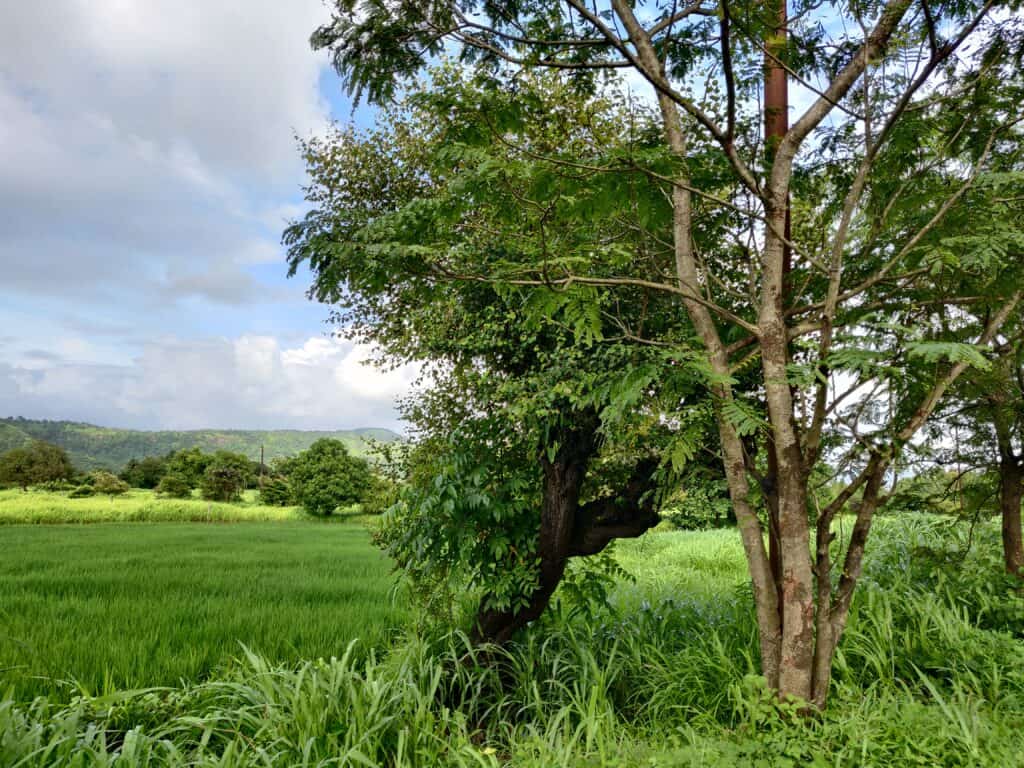
As an Abundant Fodder
The plant grows without maintenance and in abundance. The antioxidant and antibacterial properties of Jujube fruit are recognised and incorporated by various communities for farm animals like cattle, goats, chickens, fish, pigs and more as it helps promote digestive tract health, growth and quality of yield.
The fresh leaves are dried in summer and stored throughout the year. They are mixed with legume husk to enhance the nutritional value of cattle fodder.
Jujube as Wind Break and Live Fence
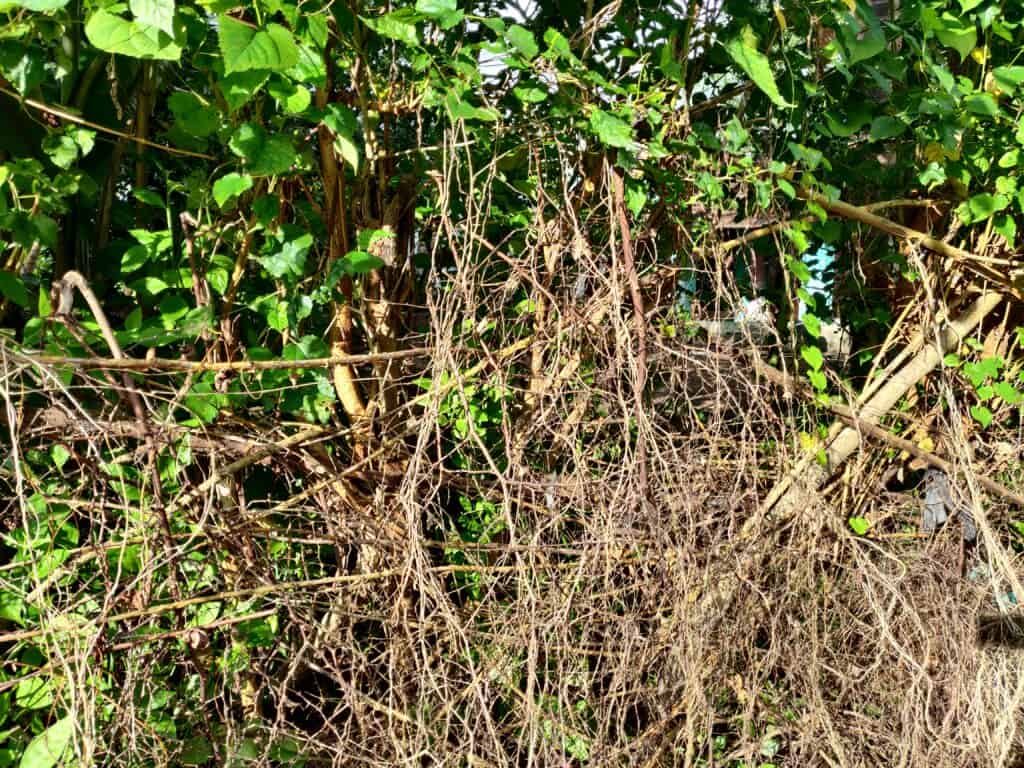

In India, Jujube is planted as windbreaks on rice paddy field bunds, alternatively with other shrubs and fruit trees to form a dense fence.
Accessible and Affordable Timber
The wood is reddish, fine-textured, hardy and durable. It makes excellent firewood. It is used for making farm tool handles and houses too. The shrub is periodically pruned for timber every 2 to 3 years.
When used as handles for farm tools, the durability of the wood increases with usage as it gets seasoned due to being in contact with human skin, soil and sun.
Edible & Medicinal Usage
Jujube is rich in Vitamin C and is also a source of vitamin A, and B complex and minerals like calcium phosphorus and iron.
The Vitamin C content of Jujube is initially low and increases as the fruit ripen.
Edible Usage

Ripe fruits are preferred raw. They are also made into candies for children by boiling in a solution of salt and sugar.
Borkut, a powder made from sun-dried ripe fruits, is famous throughout India and is an excellent healthy alternative to commercially processed candies.
A seasonal abundance of fruits helps the locals, especially the marginal communities to dry and store the fruits for yearlong consumption. Thus, it is also called poor man’s fruit in India.
The ripe fruits can be mixed with spice (chillies) and salt and eaten as a tasty home remedy for indigestion.
It is also made into pickles and alcoholic and non-alcoholic beverages.
In Indonesia, young leaves are cooked as a vegetable.
Consumption tip – to be consumed moderately as hyperconsumption leads to coughing and sore throat-related issues.
Medicinal Usage
In Ayurveda, the dried pulp is used for treating burning sensation, blood impurities and blood circulation.
The fruit is used as a remedy to improve sleep quality, reduce anxiety and improve metabolism.
The leaf juice is extracted and rubbed gently for treating eye infections.
A homemade herbal hair pack is prepared by making a fine paste of Jujube, Azadirachta indica (Neem) and Phyllanthus Emblica (Amla)
Finely ground fresh leaves are used as a dressing to help treat wounds due to the
The dried fruits are ground into powder and taken orally to treat diarrhoea.
Fruit pulp is also used for lowering the impact of excessive thirst.
A preparation of leaves, fried in ghee and mixed with rock salt is used as a remedy for treating cough.
Other Usage
The leaves and bark of Jujube have tannins which are used both in the traditional and conventional process of leather making.
How to grow Jujube?
Starting from seeds:
Jujube is easily reproduced by seeds. It does not need particular pretreatments as such.
- The seeds need to be collected from the mature fruits, dried during summer and can be sown before the wet season, directly into the soil.
- For raising in a nursery all it needs is a well drained potting mix with humid conditions at the temperature of -20°C.
The seeds are enclosed inside a stone-like membrane, for better germination the seeds can be removed from this stone before planting.
They germinate in 3 – 4 weeks when left in stone, quicker if it is cracked.
In nature, the long-range dispersal of seeds occurs via animal droppings.
Propagating from Root Sprouts:
Root sprout propagation is done by taking cutting of the root sprout of the plant and the ideal time is between late fall and late winter. The time can be chosen based on observation with respect to the time when the plant shows no sign of active growth.
Tips to avoid plant damage:
Choose sprouts which are growing away from the main stem.
Grafting:
Jujube is propagated by grafting two genotypes or cultivars together: the rootstock and the scion of chosen variety.
Air Layering:
Indian Jujube is rooted successfully by air layering branches, rooting hormones can be used as well. For a successful rooting, choose a well-matured and at least 2-year-old wood. A successful rooting of cuttings taken of 2-year-old wood.
Transplantation is recommended once the baby trees establish their root system and turn sturdy enough to hold the soil. You can either move it to a larger pot or transplant it into the ground.
Caring for Indian Jujube
The plant does best in warm and dry climates and can tolerate winter lows down to some extent.
It is tolerant to diverse soil types as well as nutrient-deficient soil. For desirable growth, a well drained and nutrient-rich soil mix can be used.
It is a sun-loving plant and needs to have access to full sun for fruiting.
As Indian Jujube propagates via animal and bird droppings, it is recommended to avoid moving cattle after grazing into open areas to help manage the unnecessary spread.
Harvesting Tips
- Fruits can be harvested once they turn reddish-black.
- Barks of mature trees can be harvested for timber.
- 1 to 2-year-old barks can be pruned for fencing during dry seasons, they grow back in the coming wet season.
Other Interesting Facts:
The Indian jujube is a host plant for lac insects and is also food for the Tasar Silkworm that makes precious silk in India.
Final Thoughts
In conclusion, Indian Jujube is an excellent choice for regenerating degraded landscapes, erosion control and reclamation however needs to be done with care. Being a vigorously growing and propagating shrub, it has shown invasive behaviour in Fiji and Northern Australia, thus needs due consideration and care when introduced to non-native spaces.
Its tolerance to drought and degraded soil types makes it suitable to include as a low-input and high-yielding species for distressed land or marginal communities struggling with crop failures and access to irrigation. The potential to produce processed products like pickles, dry fruits and candies add on as a source of generating income for economically backward communities. It also helps communities build and repair their houses in a more self-sufficient manner.


